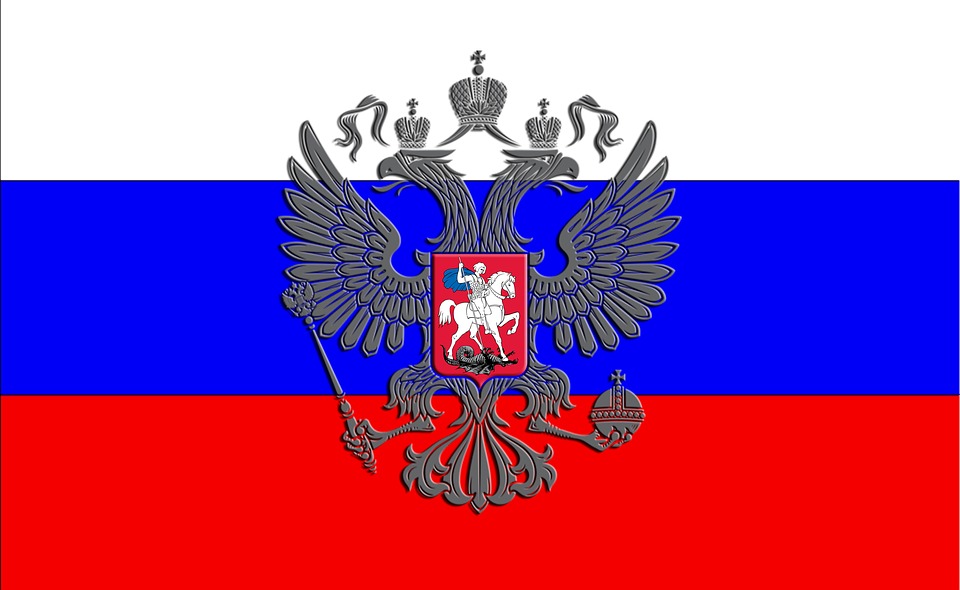1 June 2023
The Wolf and the Goat
A Russian folk tale.
By Neil Tidmarsh

Just to show that the Shaw Sheet (ever striving to be fair-minded) isn’t no-platforming Russian culture, here’s a Russian folk tale:
Once upon a time a nanny goat and her kids lived in a little hut in the middle of the woods. Whenever the nanny goat went out to look for food, her kids locked the door and were careful not to unlock it again until they heard her knocking and singing a little song to them on her return.
One day a wolf, hidden in the undergrowth, heard her sing the little song and saw the kids open the door. He waited patiently for her to go out again and then crept up to the little hut and knocked on the door and sang the little song. But his voice was too rough and he didn’t get the words quite right so the kids knew he wasn’t their mother and refused to open the door.
The wolf hid himself in the undergrowth again and when the nanny goat returned he listened very carefully to her voice and her song. The next time she went out he went back to the hut and knocked on the door and sang the song word-perfect and in a soft, sweet voice just like the nanny goat’s. This time the kids thought their mother had returned so they unlocked the door. Then they saw that it wasn’t the nanny goat who had come back – it was the wolf! But it was too late. The wolf rushed into the hut and ate them all up. Snap, snap, snap. Gobble, gobble, gobble.
When the nanny goat returned to the hut and saw what had happened, she sank to the floor weeping and lamenting. “Oh my poor babies!” she wailed. “Why did you unlock the door and let a cruel and wicked wolf in to eat you all up?”
The cunning wolf came into the hut. “Slander and lies!” he said to the nanny goat. “Come with me for a walk in the forest and I’ll tell you what really happened.”
The nanny goat, out of her mind with grief, went into the forest with the wolf. But before they could get deep enough into the forest for him to kill and eat her too, they found the still-burning remains of a huntsman’s cooking fire in their way. The goat, coming to her senses, said “Let’s have a competition to see who can jump across the fire.” The wolf agreed. He was confident that he could clear the fire and if the goat fell in then so much the better – he’d have roasted goat for his supper rather than raw goat. So he jumped first. But he’d misjudged the size of the fire and he fell into the flames and the red-hot embers. That was the end of him. The heat burst his belly open and the kids came tumbling out and ran to embrace their mother.
From then on the mother goat and her children “lived happily, acquired wisdom and eschewed evil”. The End.
The Wolf and the Goat is one of the many hundreds of folk and fairy tales collected and published by Aleksandr Afans’ev – a Russian lawyer, archivist and folklorist – between 1855 and 1863. No doubt it’s even older than the century or two in which it’s been in print, but it’s in the nature of folk tales to have a timeless and eternal relevance and this one does indeed appear to have tremendous contemporary resonance; it could even be read as an allegory of the current situation in Russia. It wouldn’t be too fanciful to see the goat’s hut as representing Russia, the nanny goat as Mother Russia, the kids as the Russian people and the wolf as Vladimir Putin.
After all, Putin managed to persuade the Russian people to open the doors of power to him by posing as the embodiment of Mother Russia, as the champion of traditional Russian values. He gave his political party the patriotic name ‘United Russia’, a mask for what has since been dubbed “the party of crooks and thieves”. But once in power, he and his regime revealed themselves as corrupt, repressive, grasping and ruthless, killing off civil liberties, political freedoms and the rule of law. His control of the media has brainwashed Russians into believing that his voice is the authentic voice of Mother Russia; this cunning ventriloquist’s act has metaphorically sucked the life out of them, reducing them to a nation of zombies, of the living dead (how fitting that his propaganda has rallied them to the military symbol of the letter ‘Z’ – Z for Zombies). And now of course – by launching the imbecilic and disastrous invasion of Ukraine – he is killing off actual Russian human beings by sending them to die in their tens of thousands on the soil of their innocent neighbour. The lying, murderous wolf has taken over the goats’ hut. How the real Mother Russia – that poor bereaved nanny goat – must be weeping for her deceived and dead kids now.
But the folk tale has a happy ending, with the wolf destroyed and the kids saved. What are the chances that current reality will deliver on that part of the allegory too? Unlikely? Well, the weakest part of the story might appear to be the wolf’s willingness to jump over the fire (the hunters’ fire here works as a metaphor for the Ukraine conflagration) – how could the wolf be so stupid? And yet he was, so he did. How could Putin be so stupid as to invade Ukraine? And yet he was, and he did. So even that apparently weak narrative turn is in fact strong and true to life. And day by day it becomes more and more likely that Putin’s miscalculation over Ukraine will be the end of him, just as the wolf’s miscalculation over the fire was the end of him. The Russian army has been run ragged, the Ukrainian army is preparing a massive counter-offensive, Putin’s regime is disintegrating into feuding factions (Prigozhin’s attacks on Shoigu and Gerasimov can only be the tip of the iceberg), the anti-Putin armed forces of the Free Russian Legion and the Russian Volunteer Corps are threatening to march on Moscow, commentators and experts on Russian affairs are predicting mutiny, mass desertions, revolution and civil war. It seems that the odds are in favour of an end to Putin’s rule and to his murderous war, which could lead to the saving of hundreds of thousands of lives in Ukraine and even to the restoration to full life of those zombies, those brainwashed living dead, in Russia.
Folk tales often work as covert vehicles for dangerous eternal truths, especially in repressed societies. Aleksandr Afanas’ev was himself attacked by the authorities for collecting the folk tales which included The Wolf and the Goat. The forces of law and order searched his apartment, turning it upside down; he was hauled before a special investigative committee, dismissed from his post and driven out of his home; he died of consumption, in poverty, aged only forty-five. Two centuries earlier in Russia, Tsar Alexis I Mikhailovich (the father of Peter the Great) issued an ukase (royal edict) banning folk tales and fairy stories; storytellers who persisted in their art were arrested and had their tongues cut out.
One last (and worrying) thought: if the truths behind such stories as The Wolf and the Goat are eternal and timeless, does that mean that the people of Russia will always be in danger of opening the door to wolves masquerading as mother goats? If the story has been brought to life in the past and the present (time after time, with tyrannical tsars and murderous Communist Party leaders and gangster presidents all feeding off the blood of their people), will it continue to be brought to life in the future as well? Even if Putin falls, will another wolf take his place? Will the nanny goat and her children not learn their lesson this time? Will they in fact never be able to “live happily, acquire wisdom, and eschew evil”? Is this great but tragic nation doomed to remain tragic forevermore?


